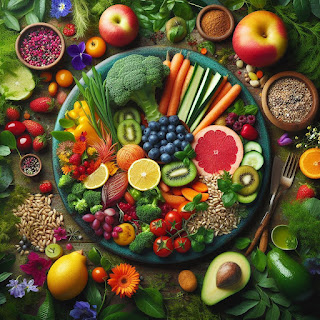Wrapping Up the Month with Self-Care: Essential Tips for a Healthy Check-In
As the month draws to a close, it's the perfect time to pause, reflect, and prioritize our well-being. Amidst the hustle and bustle of daily life, it's easy to neglect self-care, but taking the time to check in with ourselves is crucial for maintaining balance and promoting overall health and happiness. So, let's explore some essential self-care tips to help you end the month on a healthy note.
Reflect and Reset
Journaling:
Set aside some time to reflect on the past month. What were your highlights, challenges, and accomplishments? Journaling can be a therapeutic way to express your thoughts and emotions, gain clarity, and set intentions for the month ahead.
Gratitude Practice:
Cultivate an attitude of gratitude by acknowledging the things you're thankful for, no matter how big or small. Practicing gratitude has been linked to improved mood, enhanced well-being, and reduced stress levels.
Nourish Your Body
Healthy Eating:
Treat your body to nourishing, wholesome foods that fuel your energy and support your well-being. Load up on fruits, vegetables, whole grains, lean proteins, and healthy fats, and remember to stay hydrated by drinking plenty of water throughout the day.
Move Your Body:
Engage in regular physical activity that you enjoy, whether it's going for a walk, practicing yoga, or hitting the gym. Exercise not only benefits your physical health but also boosts your mood, reduces stress, and improves sleep quality.
Relax and Recharge
Mindfulness and Meditation:
Take time to practice mindfulness or meditation to quiet your mind, reduce stress, and cultivate inner peace. Even just a few minutes of mindfulness each day can have profound effects on your mental well-being.
Quality Sleep:
Prioritize sleep by establishing a relaxing bedtime routine and ensuring you get enough rest each night. Quality sleep is essential for overall health, cognitive function, and emotional resilience.
Connect and Communicate
Socialize:
Spend time with loved ones, whether it's in person or virtually. Connecting with others fosters a sense of belonging, strengthens relationships, and provides valuable support during challenging times.
Seek Support:
Don't hesitate to reach out to friends, family, or a professional if you're feeling overwhelmed or struggling with your mental health. Asking for help is a sign of strength, and there are resources available to support you on your journey to wellness.
Embrace Joy and Creativity
Engage in Hobbies:
Make time for activities that bring you joy and fulfillment, whether it's painting, gardening, playing music, or cooking. Engaging in hobbies nurtures your creativity, relieves stress, and enhances your overall quality of life.
Celebrate Achievements:
Acknowledge and celebrate your accomplishments, no matter how small. Recognizing your achievements boosts your self-esteem and motivates you to continue pursuing your goals.
As you wrap up the month, remember to prioritize self-care and make your health and well-being a top priority. By incorporating these self-care tips into your routine, you'll not only end the month on a positive note but also set yourself up for a healthy and fulfilling month ahead. Take care of yourself—you deserve it!




















.jpeg)
.jpeg)
.jpeg)











